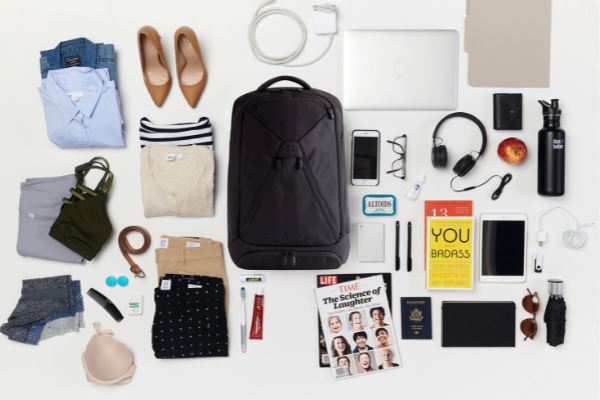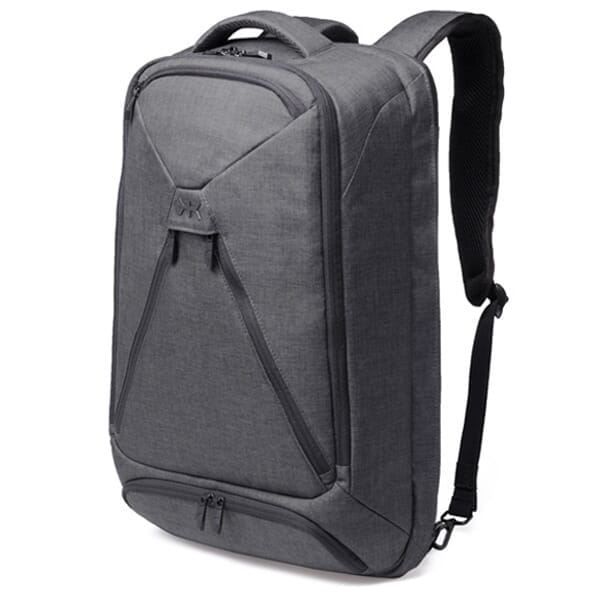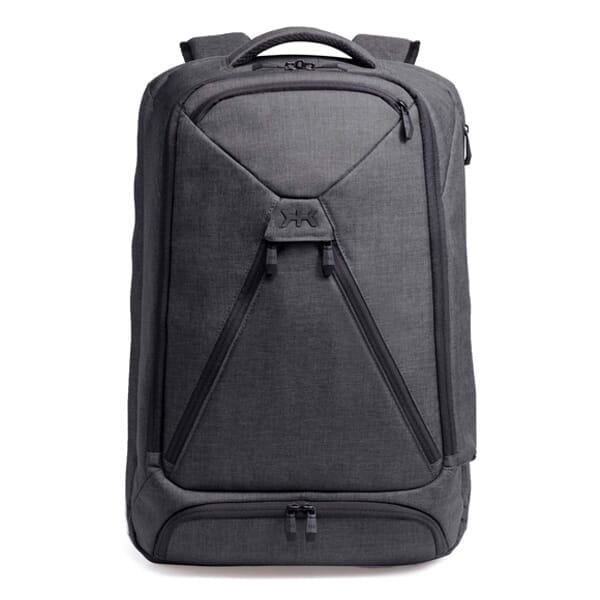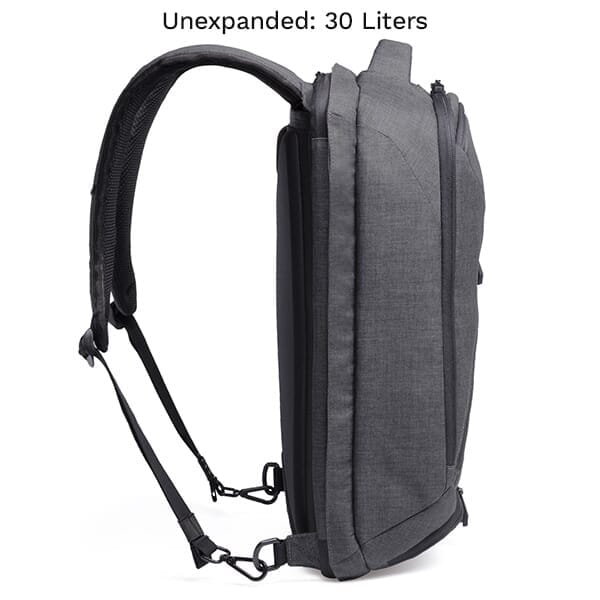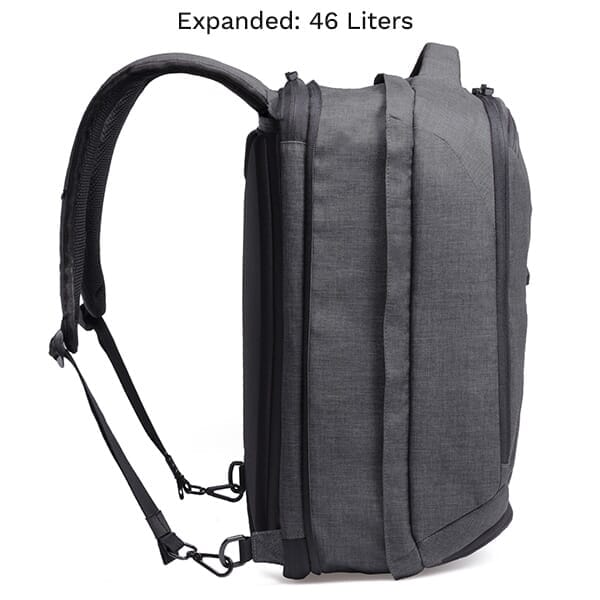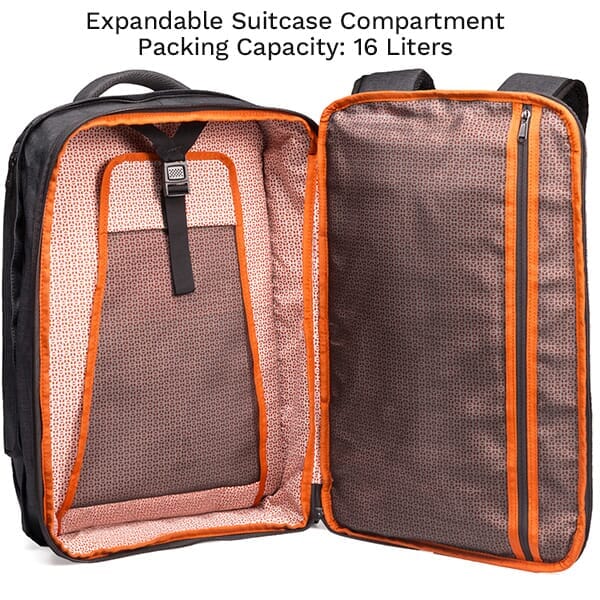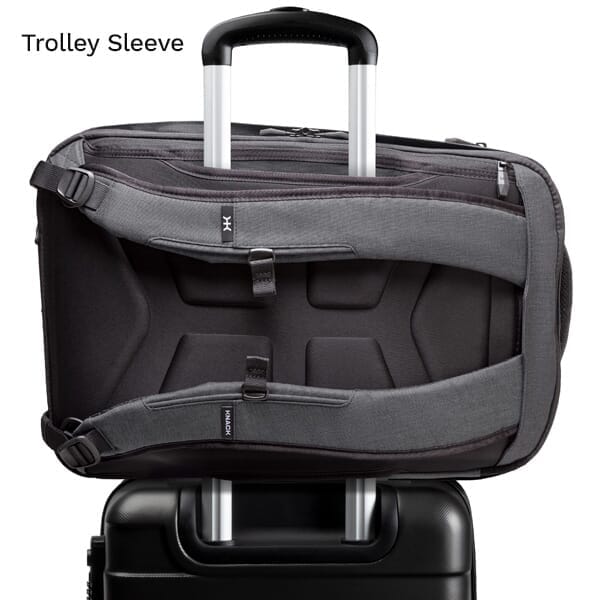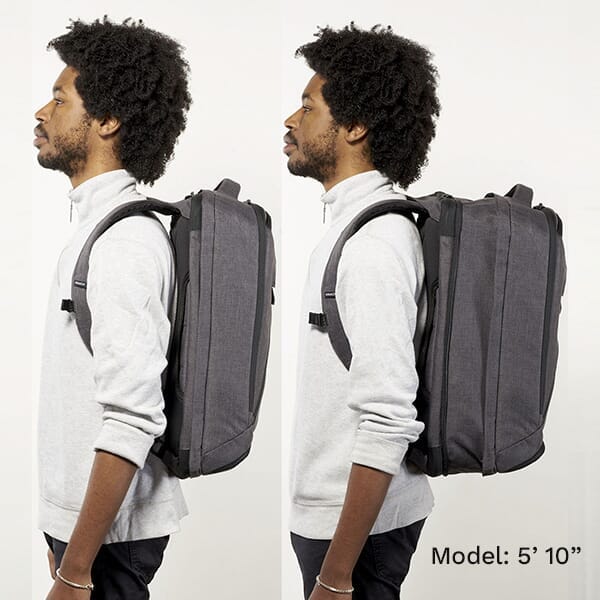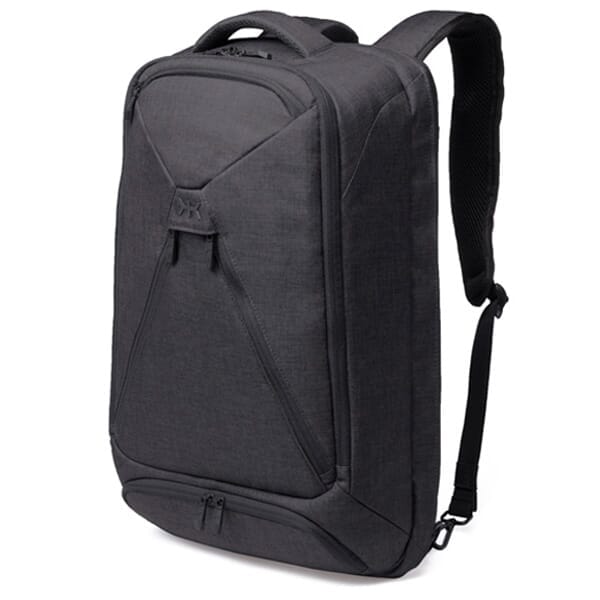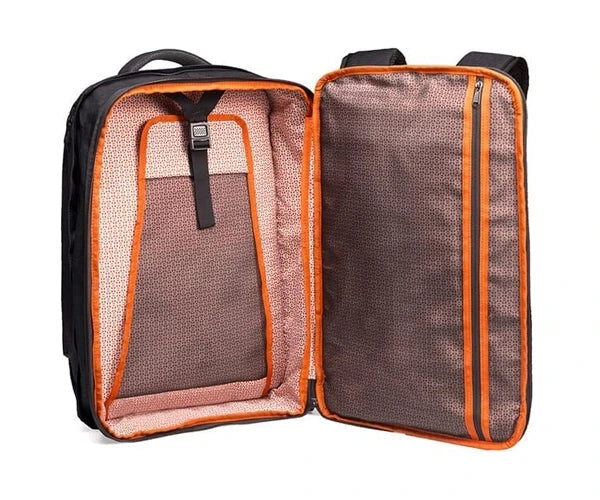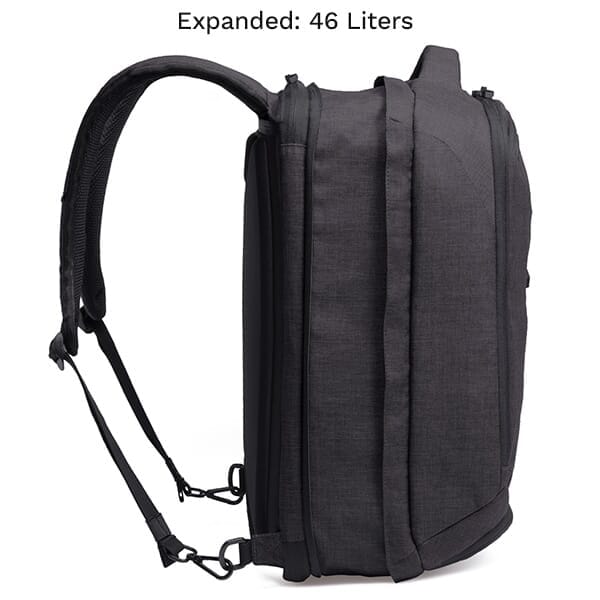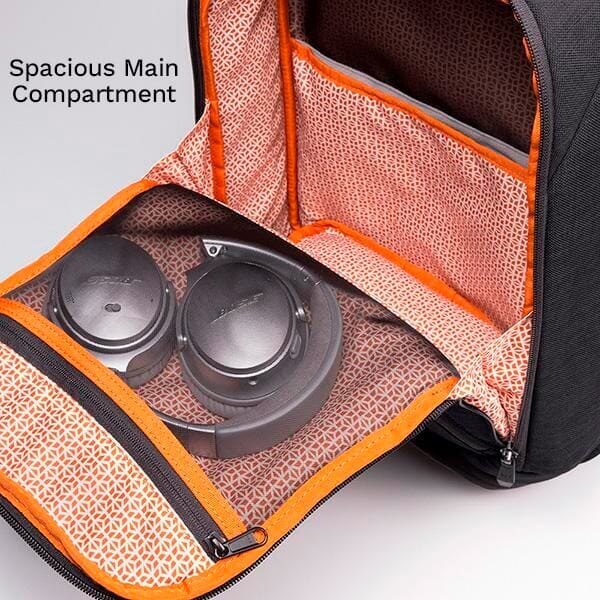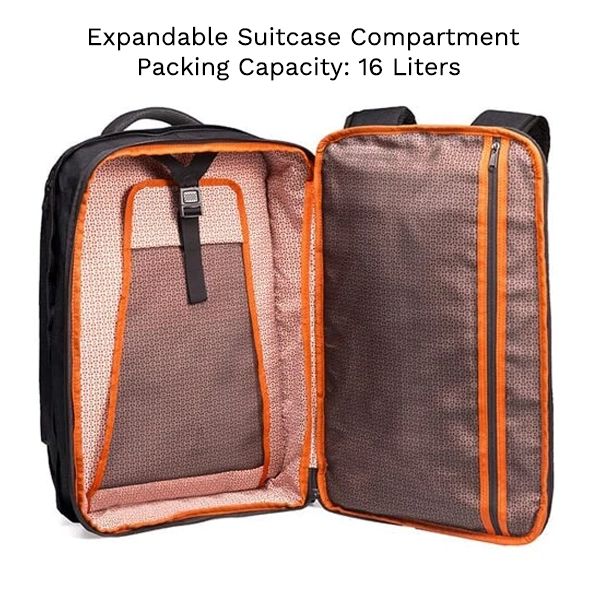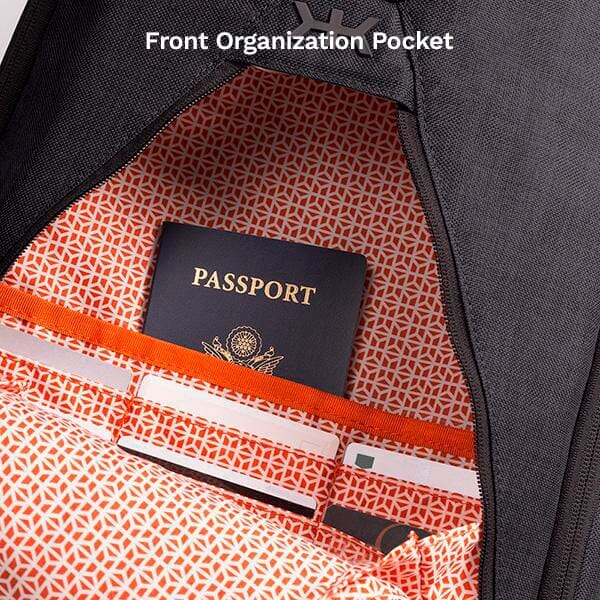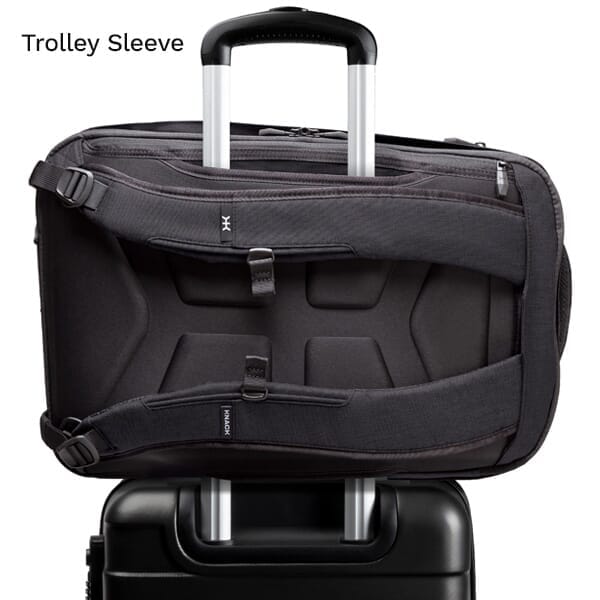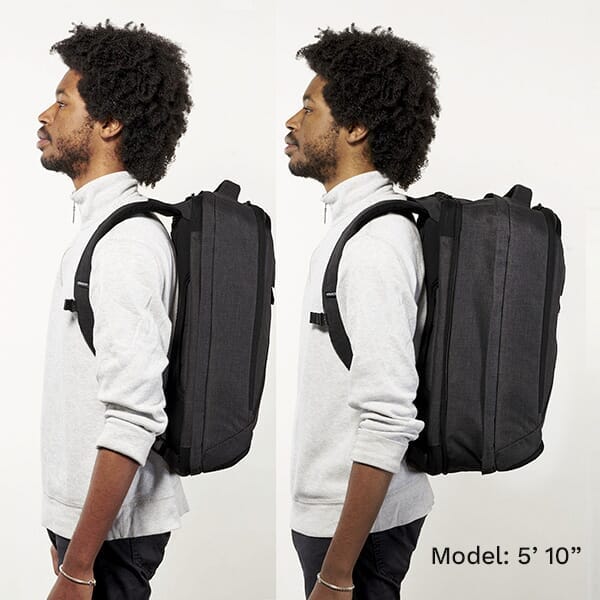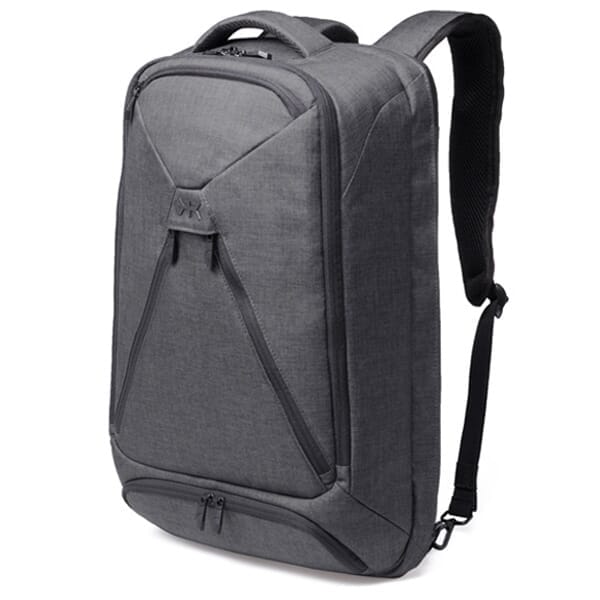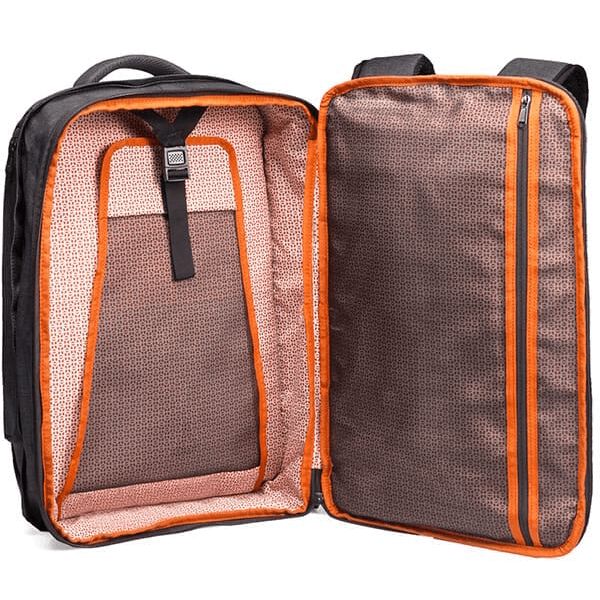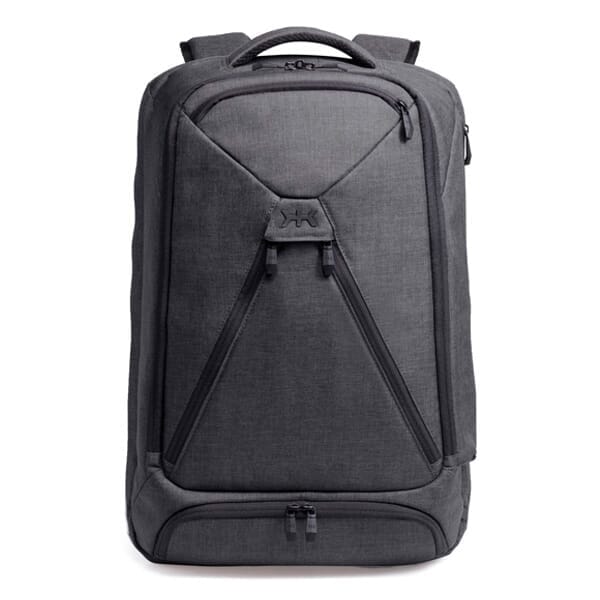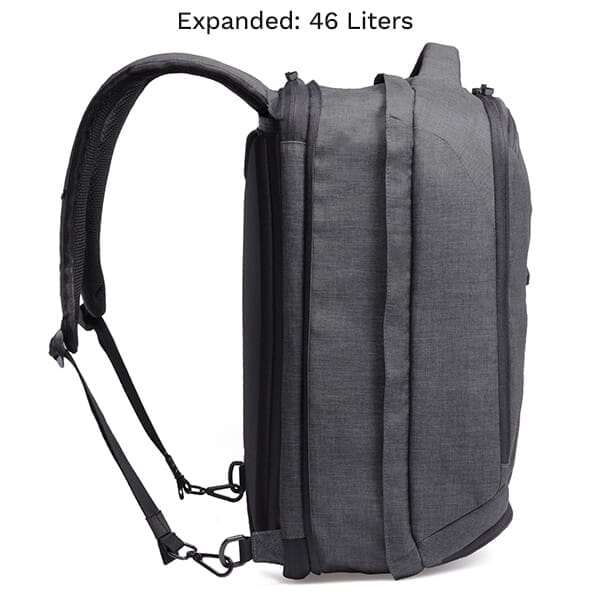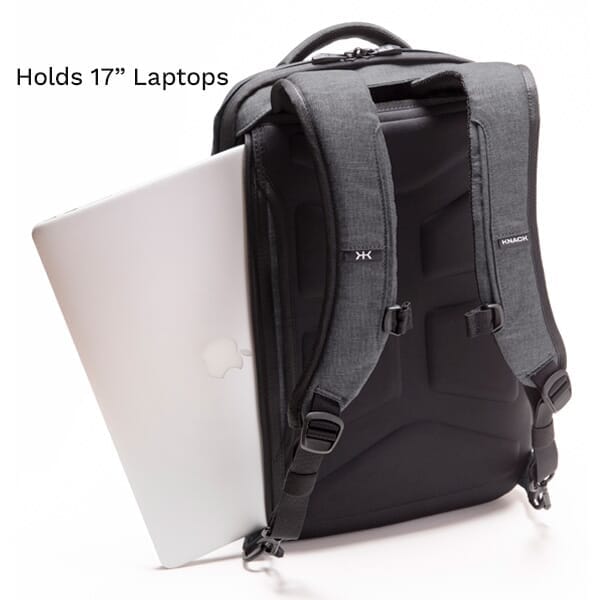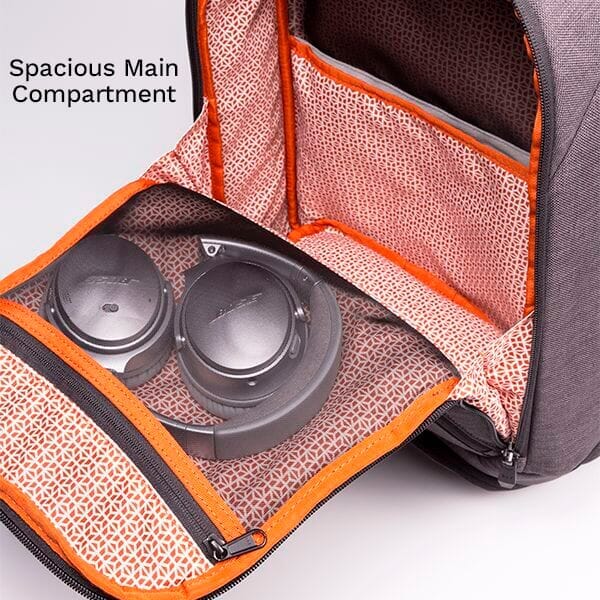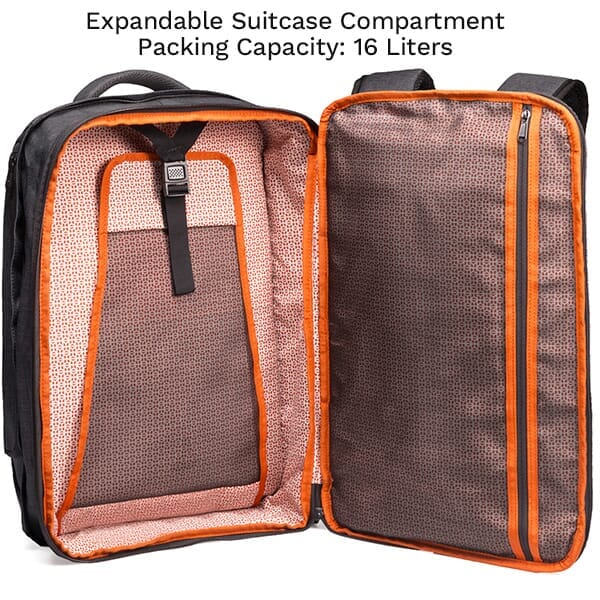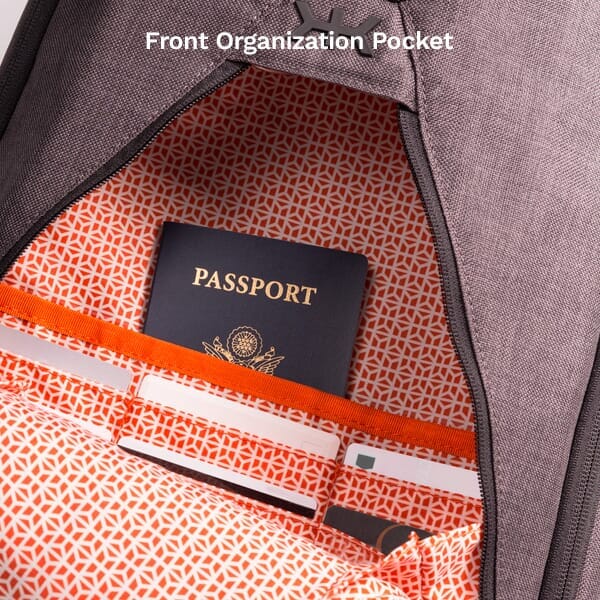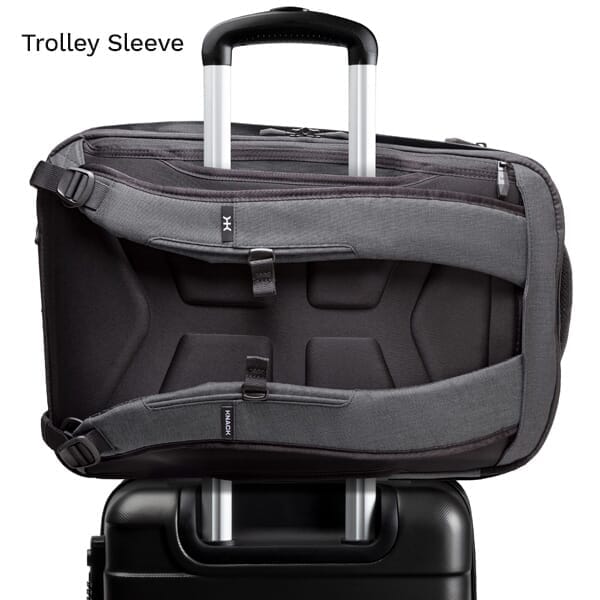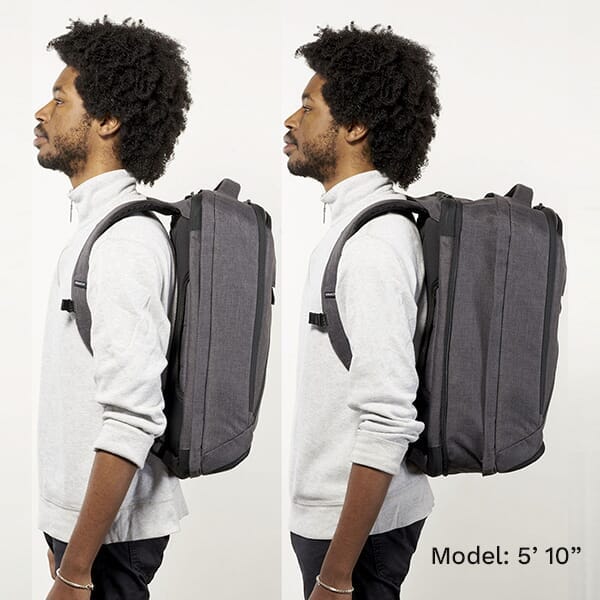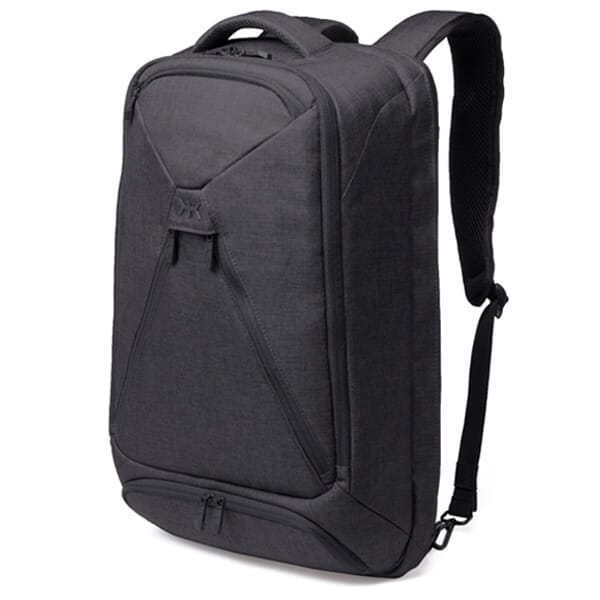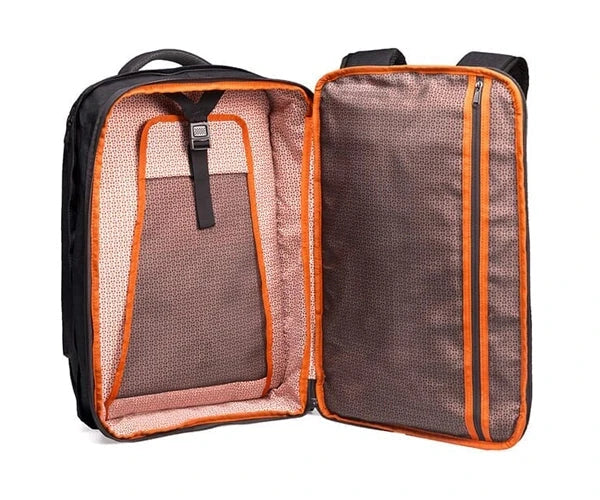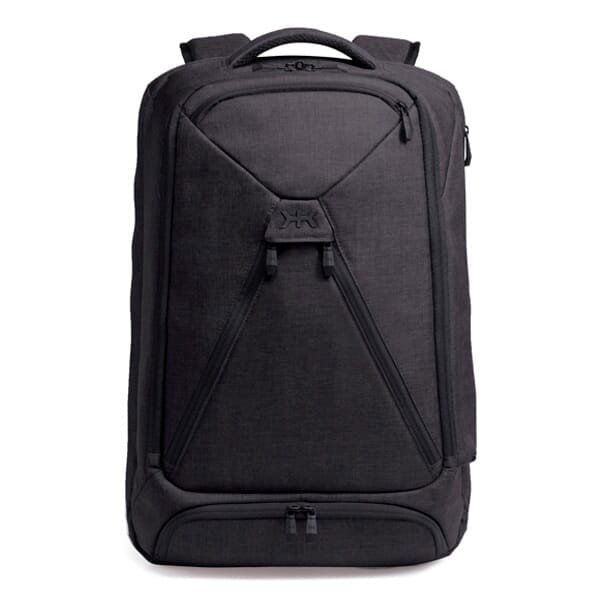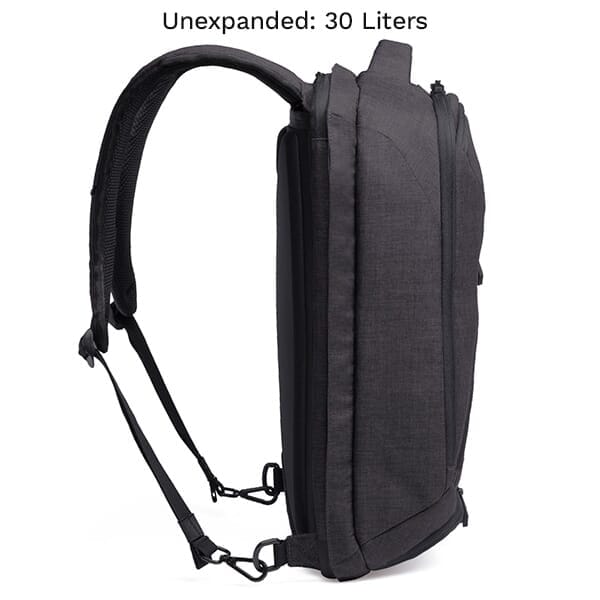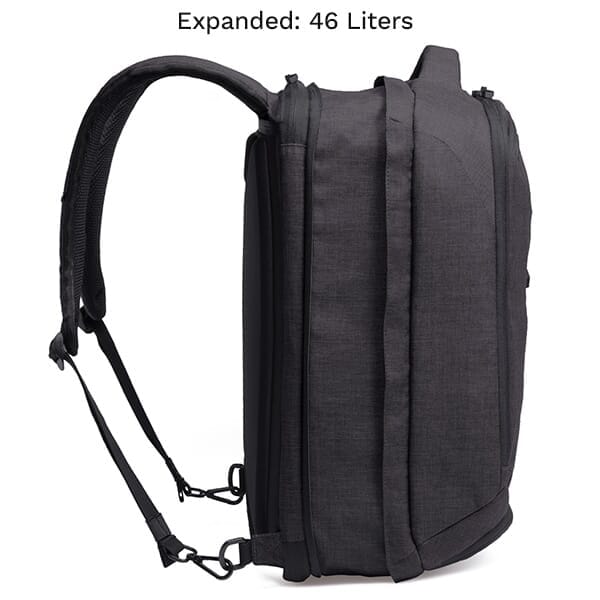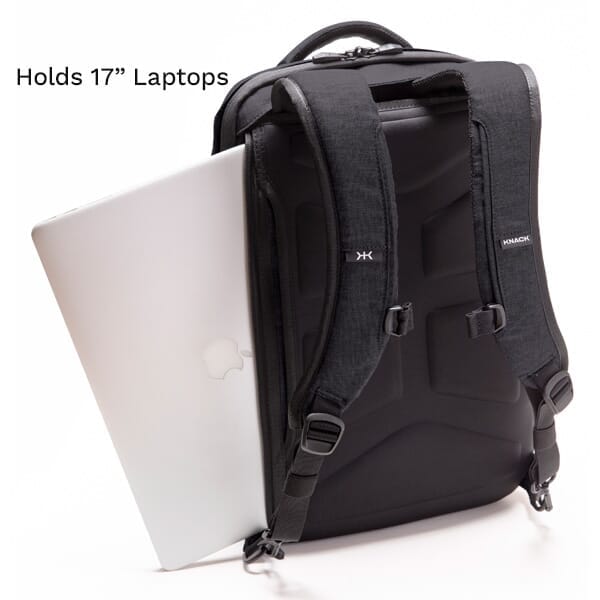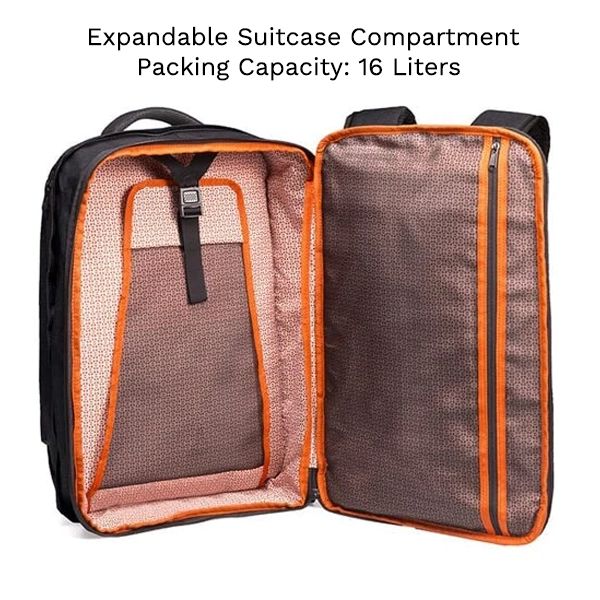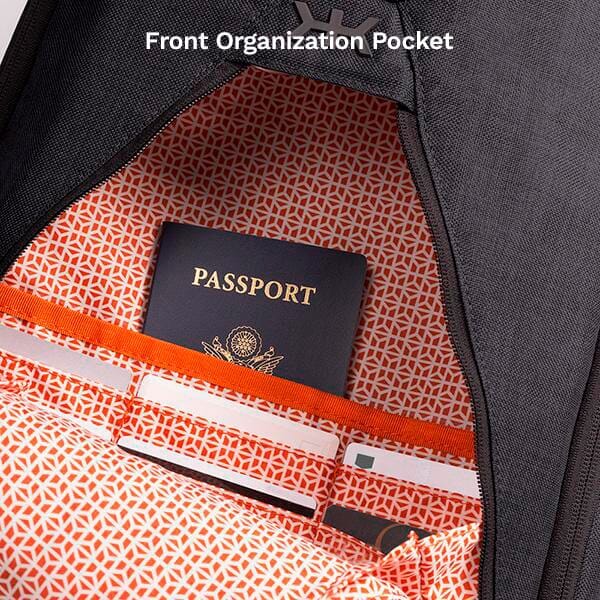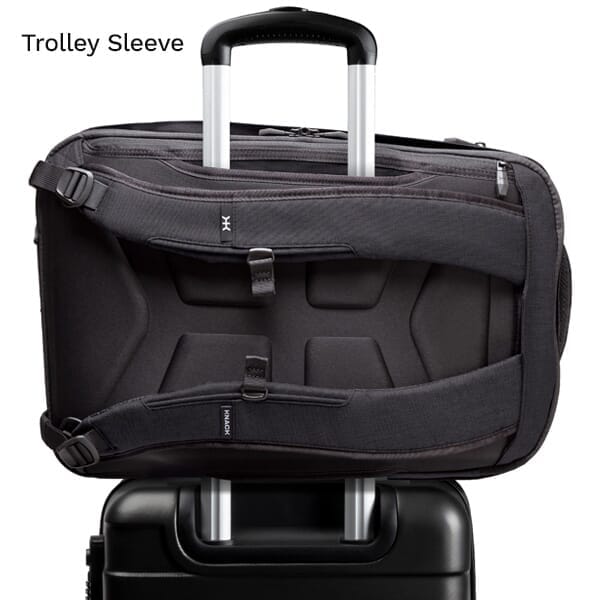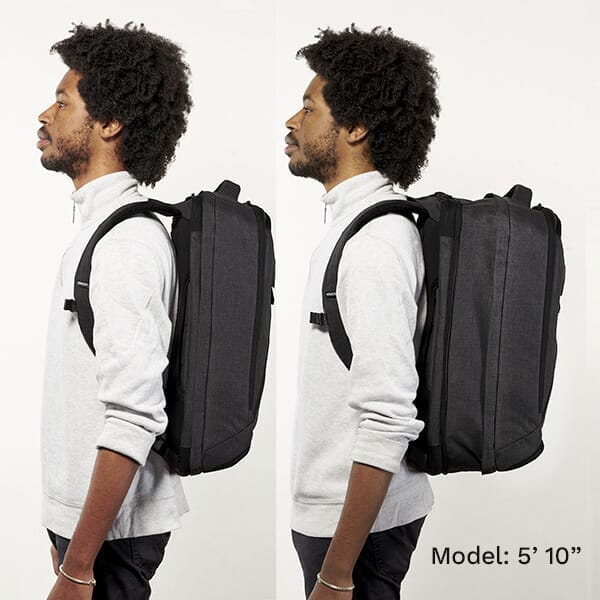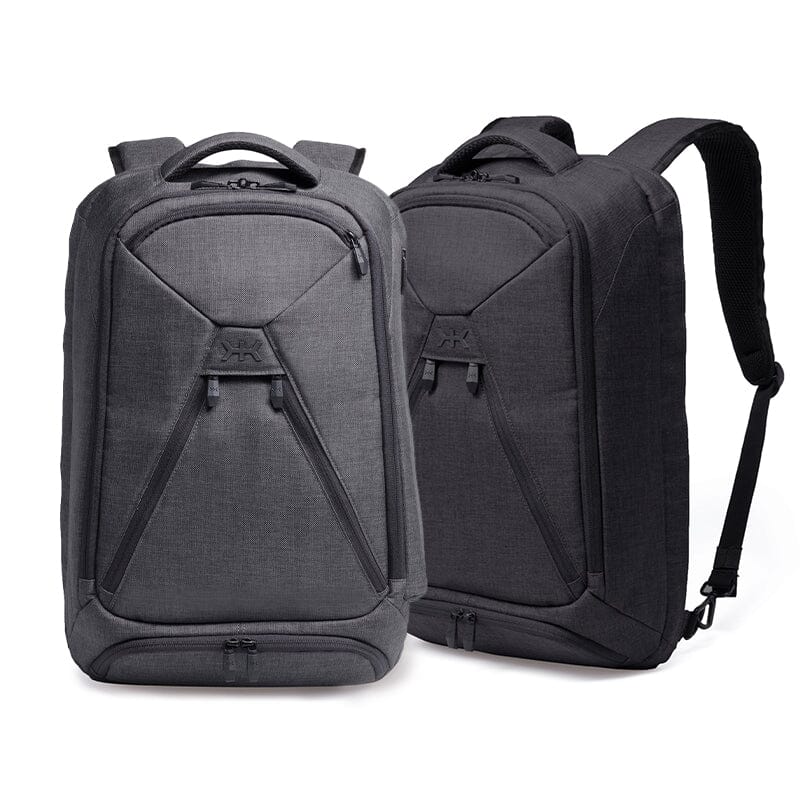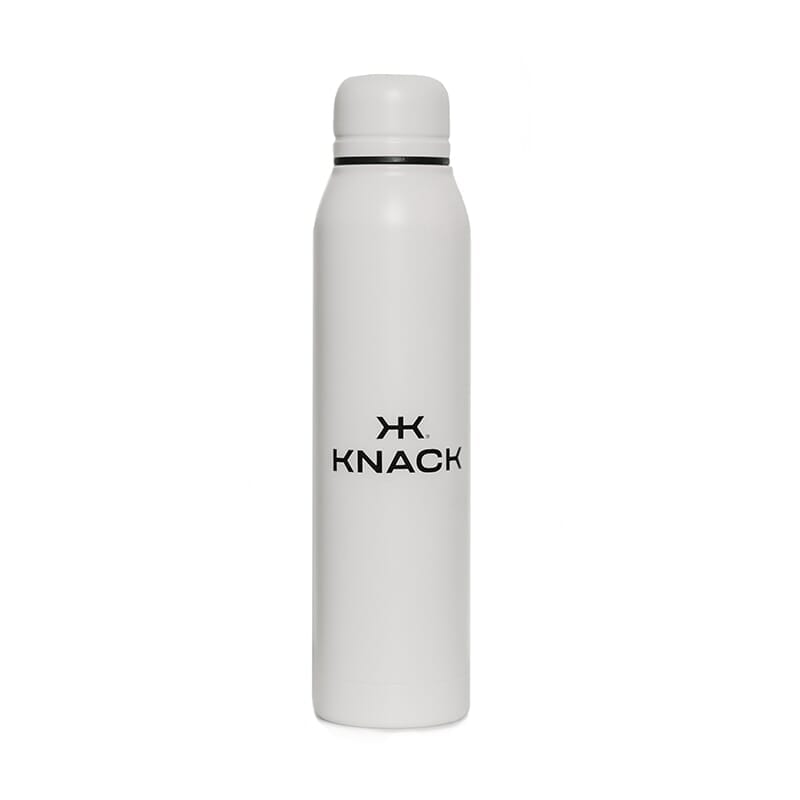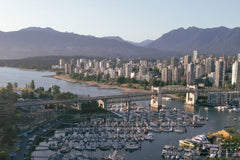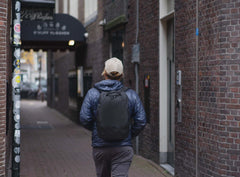From bustling train rides to relaxed weekend getaways, learn how to create a hassle-free, well-organized backpack that enhances your travel comfort and efficiency. This article unravels the secrets to maintaining an organized travel backpack, introducing you to smart packing techniques and highlighting the role an expandable backpack plays in transforming your travel experience.
Reading Time: 8 minutes |
Subscribers: 23,186 |
How to organize a backpack for travel:
- Travel backpack organization
- Pick the best travel backpack
- Take inventory of your travel stuff
- Use travel packing accessories
- Roll and fold your clothes
- Pack and protect your electronics
- Keep toiletries together
Travel Backpack Organization
Picture yourself on a train, rummaging through your backpack with growing frustration as clothes, gadgets, and toiletries seem to be thrown together in a frantic jumble. You find your socks engaging in an unexpected tête-à-tête with your toothpaste, while your headphones have taken refuge under your travel guide.
What was meant to be a well-packed kit swiftly morphs into the equivalent of a tornado in a storage room. Organizing a backpack for travel - and then keeping it organized - is a puzzle that even the most seasoned travelers have struggled to solve.
This struggle is so common largely because most backpacks are just a big hole: your clothes, tech, and toiletries all get piled on top of each other and then get totally disorganized when you pull out what you need.
It’s no surprise that your travel experience is far more enjoyable when you can access what you want, when you want it. And the Knack team knows that there’s nothing worse than having to pull everything out of your backpack just to find your toothbrush, or worrying that you’ve lost your passport just because you don’t know where it is in your backpack.
Whether you’re packing your backpack for an extended trip through Europe, or just for a local weekend getaway, these tips will help you keep your backpack organized while fitting everything that you need. Because when you have an organized backpack, you can spend more time enjoying the experience, and less time worrying about your stuff.
1. Pick the best travel backpack
Your backpack is the MVP of your trip, and choosing the right one will make it far easier to stay organized. The best travel backpack has lots of pockets, which will allow you to organize your big and small possessions. Small things tend to fall to the bottom of your bag, so you want to make sure that your backpack has dedicated pockets for easy access to these items.
A travel backpack is also easier to organize when it’s the right size. If you bring a bag that’s too small for your trip, then everything will be crammed so tightly into the compartments that it’ll be impossible to organize no matter how many pockets the bag has. On the other hand, if your bag is too big, then you’ll have a bunch of loose space, and your stuff will get jostled around.
MORE >> Compare Knack Pack sizes for your trip
Consider a carry-on backpack
If you’re flying to your destination, you need to take into account whether your backpack will fit on the airplane as a carry-on. At Knack, we strongly believe that when you travel with a carry-on only, you’re going to have a better travel experience; you’ll save money and time by not waiting and worrying about your checked luggage.
We designed Knack Packs with all the features that make it an exceptional carry-on bag. Not only do all Knack Packs fit into the overhead compartment - and almost always under the seat in front of you, but they have clamshell openings that give you easy access to everything inside, they’re built with strong but lightweight materials, they have LOTS of pockets to keep everything in place, and they have tuck-away straps that won’t dangle into the aisle.
MORE >>The Best Carry-On Backpack Roundup and Review
By zipping up the expandable travel compartment, any size of Knack Pack is transformed into a sleek, around-town backpack for use at your destination. The major benefit of which is that you won’t need to carry a second everyday bag, thereby saving you all the space that would have even eaten up by having to pack a bag inside of a bag.
2. Take inventory of your travel stuff
At least one day before you put anything in your bag, you should lay out on a flat surface all the stuff you plan to take. This practice will make sure that you’re not bringing too much or too little of anything, and gives you an opportunity to remove the extras. Do you really need that many pairs of socks? Don’t you need another long sleeve shirt? You’ll pack more rationally when you can see everything at once and when you’re not pressured by an imminent departure.
You’ll pack more rationally when you can see everything at once; and you’ll know if you’ve forgotten anything before it all goes into your bag. Don’t let the pressure of an imminent departure cause you to over- or under-pack.
A flat lay of all your travel stuff will also help you visualize how to pack similar items together, and which items should be the easiest to access. As an example, you’ll probably use your camera and camera batteries a lot, so those should go towards the top of your backpack. Heavier stuff, and things that you don’t need as often, should go in the bottom of your backpack.
In your airplane carry-on, be sure to include the essentials:
- Phone and charger
- Identification documents
- An empty water bottle to fill at the airport.
- Non-liquid snacks.
- For entertainment: e-reader or tablet and earbuds.
- For work: Laptop and charger.
- For comfort: Eye mask, compression socks, earplugs, and a change of clothes or clothes for layering.
- Tissues and hand sanitizer
MORE >> learn how to make the perfect travel packing list
3. Use travel packing accessories
Travel packing cubes are total game-changers when it comes to keeping your backpack organized. Not only do they save space (Knack’s cubes compress by 70%), but they’ll also help you keep similar items together, from clothes to toiletries. When you need a new pair of socks, you simply pull out your sock cube. Plus, they make it way easier to pack and repack - your stuff doesn’t fall out in a jumbled mess whenever you open your bag.
Another go-to packing accessory that you should always have on hand is a compressible shoe bag. Shoes are bulky, dirty, and super awkward to pack - but in most cases, you’ll want to bring an extra pair on your trip. Enter shoe bags, which will compress your shoes, and allow you to pack them together with your nice clean clothes.
Finally, bring a laundry bag. They pack flat, are lightweight, and you’ll have a place to put your dirty clothes when you’re halfway through your trip.
Pro Tip: Consider your backpack’s weight distribution
Since you’ll be walking around the airport, and around cities with your backpack, you want to pack as comfortably as possible. Thanks to Knack’s many pockets and compartments, you can really optimize your bag’s weight distribution so that it’s super comfortable, even when fully-loaded.
Heavier things should go close to your body and closer to your hips. If you are taking a Knack, put your laptop in the laptop compartment that lies up against your back, and use a compressible shoe bag to keep your shoes in the center of the expandable compartment.
Lighter items should go around the upper perimeter of your bag. Your snacks, chargers, and little miscellaneous things can stay in the mesh pockets.
Knack Packs are extremely lightweight considering how strong they are (even the large ones weigh only 3lbs. 4oz).
4. Roll and fold your clothes
Since clothes take up such a large volume in your travel backpack, you need to pack them strategically. Any soft clothes - like t-shirts and underwear, should be tightly rolled to save space (and ideally put into packing cubes). Then fold the stiffer clothes - like blazers and khaki pants. To reduce wrinkles, you can put tissue paper in the folds so that your clothes move slightly in your bag.
If you’re packing clothes into a suitcase-like space (such as the Knack Pack’s travel compartment), it’s best practice to line the bottom of the compartment with your rolled clothes, and layer the folded clothes on top. This way, you can easily remove and sort through your folded clothes, without disrupting the rolled clothes.
Take a deep dive into rolling vs. folding here.
5. Pack and protect your electronics
After your passport, your tech is likely the most valuable thing you carry with you - particularly if you’re traveling for business. One of the most important reasons to keep your travel backpack organized is to keep track of your stuff - you always know where everything is, and you know that it’s packed safely.
Keep your electronics in dedicated pockets in your backpack. Your laptop should go in a padded, sling-bottom laptop pocket. If your backpack doesn’t have a laptop pocket, make sure that it’s stored in a thick, padded laptop sleeve.
Microfleece-lined pockets are best for your phone and tablet, and any other tech with a delicate screen that could get scratched. Then, put smaller tech items - like batteries, external hard drives, and earbuds - in a smaller pocket or in packing cubes.
MORE >> learn more about packing tech for travel
6. Keep toiletries together
Toiletries are odd shapes and sizes and often feel really miscellaneous. So always try to go for travel-sized versions to save space. Pack a comb instead of a hairbrush, and liquids in 100ml refillable bottles that comply with TSA’s 3-1-1 regulations.
And when it comes to liquids, keep them together in a leak-proof bag so that they don’t spill all over clothes and electronics, and so that you easily can pull them out when you go through security. And here’s a pro-tip: Avoid liquids altogether. Try out shampoo and conditioner bars, bar soap, and even toothpaste tablets!
Use these tips to keep your backpack organized when you travel. And with practice, as you figure out packing techniques that work best for you, be sure to share them with us in the comments.
About Knack
Knack Packs are unique everyday laptop backpacks with a hidden suitcase compartment that expands when you travel. Knack expandable backpacks make it easy to work, and play, with Just One Bag. Read our story here.
